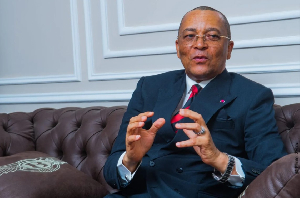The monetary and Financial Committee of Cameroon just indicated that the country will need 3,000 Megawatts (MW) of electricity, approximately three million kilowatts, to achieve a rate of growth of 9.5 percent in 2018, while the Government in the sector investment programme provides for this infringement rather in 2020.
According to the Monetary and Financial Committee, Cameroon has to achieve "investment needed to increase the electricity production capacity to 3000 MW to allow it, according to simulations, arrive at a growth rate of about 9.5 percent in real terms, from 2018.
According to the Minister of the economy, Emmanuel Nganou Djoumessi, who spoke on the subject at a meeting between Cameroonian economic operators and officials of the African development Bank (BAD) in Douala, end of June 2014, the investment programme of the Government in the sector of electricity in the country, provides the achievement of this production capacity of 3000 MW as in 2020, two years after the date desired by the monetary and Financial Committee of Cameroon.
According to official statistics, Cameroon which has the 2nd hydroelectric potential in Africa behind the Democratic Republic of Congo (DRC), currently disposes the installation of approximately 1 200 MW only, capacity for an application assessed annually to 8 percent.
"Despite the vast electrical dam construction program initiated in Cameroon, supports the monetary and Financial Committee of Cameroon, including the construction of the Lom Pangar dam, the largest ever built in the country, whose commissioning is scheduled for 2015, as well as those of Mekin, Memvé’éle, Menchum and Bini at Warak, pending the outcome of discussions on the hydroelectric Natchigal, the gap will not be filled before 2018”.
However, Cameroon remains involved in numerous projects of construction of solar parks in different parts of the country. As a reminder, the groupement inter-patronal du Cameroun (Gicam) complains about the quality and the quantity of electrical energy offered to industrialists in the country.
Since July 2001, Aes Sonel undertook a vast investment of about 600 billion CFAF in the sector of production, transport and marketing of electric energy in Cameroon. This investment, with regards galloping demography and multiple pitfalls including fraud and vandalism on the facilities, was insufficient to bring the growth to Cameroon.
Infos Business of Wednesday, 20 August 2014
Source: PANA
Cmr needs 3,000 MW of electricity to achieve 9.5% growth rate













